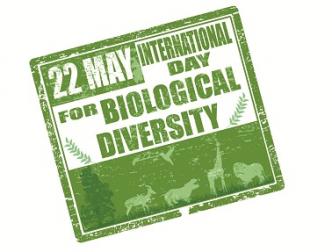
May 22nd is known as International Day of Biological Diversity. It’s a holiday proclaimed by the United Nations. The goal of the holiday is to increase global understanding and awareness of biological diversity issues.
The holiday was created by the UN in 1993. However, it wasn’t until 2000 that May 22nd was established as the offic ial date. Each year a new theme is established. The themes for the past eleven years are as follows:
· 2012 – Marine Biodiversity
· 2011 – Forest Biodiversity
· 2010 – Biodiversity, Development and Poverty Alleviation
· 2009 – Invasive Alien Species
· 2008 – Biodiversity and Agriculture
· 2007 – Biodiversity and Climate Change
· 2006 – Protect Biodiversity in Drylands
· 2005 – Biodiversity: Life Insurance for our Changing World
· 2004 – Biodiversity: Food, Water and Health for All
· 2003 – Biodiversity and poverty alleviation – challenges for sustainable development
· 2002 – Dedicated to forest biodiversity (Source: http://www.cbd.int/idb/)
The Biological Diversity Theme for 2013
Water and biodiversity is the theme for 2013. It was chosen to partner with the United Nations designation of 2013 as the International Year of Water Cooperation. Countries submit their ideas to celebrate each year’s theme. You can find your country’s celebrations at the United Nations website.
Some ideas for celebration include:
· Follow the United Nations Decade on Biodiversity on Facebook
· Join the Billion Tree Campaign
The United Nations has identified 12 messages for the 2013 theme. Of those messages a few may stand out and provide you with ideas to embrace the theme within your life, your home, and perhaps your community.
Message #2: “We live in an increasingly water insecure world where demands for water often outstrip supply, water quality fails to meet minimum requirements and the extremes of drought and flood are increasingly seen.” (Source: http://www.cbd.int/idb/2013/messages/default.shtml)
Message #11: “The water and carbon cycles are inter-dependent. Water is required to sustain carbon capture and storage by ecosystems and the plants and other biodiversity involved in that process in turn help regulate water; forests, for example, depend on water and also help regulate it. Climate change adaptation and mitigation are inter-dependent through water.” (Source: http://www.cbd.int/idb/2013/messages/default.shtml)
To summarize the messages, demands for water are increasing, while policy and pollution is affecting the quality of water that is available. You can take steps in your life to reduce your consumption of water and of materials and practices that cause harmful emissions, which subsequently pollute the water supply. Biological diversity is about understanding the function of water and taking measures to protect all sources of water.

